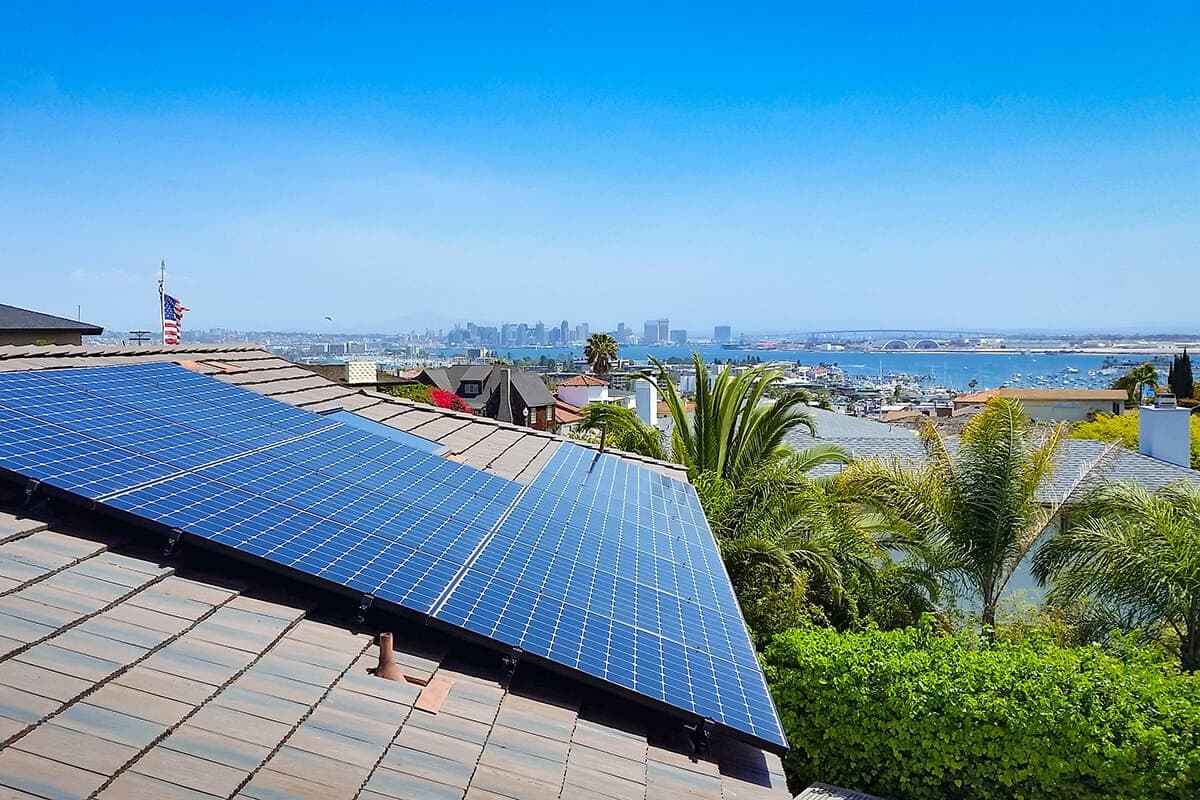New California Solar Mandate Rolls Out In 2020: What Homeowners and Builders Need to Know



Starting January 1, 2020, an update to California's Building Energy Efficiency Standards, Title 24, will require all new residential buildings three stories and under that are built in the state to have solar panels. The mandate will apply to both single and multiple family homes. This is a groundbreaking move - California has led the way in solar energy for years, but this is the first time that a state has taken such strong steps to ensure that all new buildings will be powered by solar energy. It also puts California on track to achieve its goal of 80% net-zero carbon energy by 2050.
From now on, not only will all newly-constructed California homes use clean energy, but they will also be more energy-efficient. Currently, typical residential solar panels in California are about 6.8 kilowatts. However, the new systems will be considerably smaller at only 2.7 to 5.7 kilowatts, and it's expected that they will reduce current home energy use by over 50%. This will help lower associated utility costs and also reduce the electric grid impact.
The new California solar mandate also encourages the installation of other alternative energy technologies such as solar batteries and electric water heaters. Even though the mandate's standards were designed with mixed-fuel homes in mind - usually natural gas for heat - it will be easy for homeowners to make the switch to a home run completely on solar electricity. Energy management smart home systems platforms such as Nest have also become involved, which means that new homes could potentially be fully integrated with not only energy-efficient clean energy but also smart devices to keep everything running smoothly.
Naturally, Title 24 has invited some controversy, mostly surrounding the potential costs. As California already has some of the highest housing costs in the nation, these concerns are warranted. Although it's expected that residential solar panels will add about $9,500 to the building of new homes, the increased energy efficiency is expected to save homeowners approximately $19,000 over the course of thirty years - the length of an average mortgage. Methods to lower costs upfront have also been presented, such as solar leases. These divide the costs of solar panel installation into monthly payments over the course of several years, and some require no down payment. The presence of solar panels also adds market value to homes if the owner decides to sell.
Additionally, it's less expensive for a solar panel system to be installed while the house is being built than for a panel system to be retrofitted. A compliance credit is also available to solar panel installers, which will lower the costs even further. In fact, the potential to lower costs for builders and homeowners alike has been mentioned as one of the benefits of the new California solar mandate.
Concerns have also been raised about the overall cost of electricity being pushed onto those who still use traditional power sources. Although homeowners with solar power pay less for their utilities, the cost of the electrical grid still has to come from somewhere, and that place is typically other non-solar customers. For this reason, some believe that it would make more sense to increase the number of solar farms rather than the number of privately owned rooftop solar panels. This would allow solar energy to be used by any home, not just those equipped with solar panels. The electrical output of the farm's solar panels could also be increased because the panels can be designed to follow the sun.
However, solar farms have to occupy a large area of land, and this could have devastating environmental consequences. It's important that solar energy cause as small an effect on the environment as possible, since a major reason for a shift toward clean energy is to preserve the health of the planet. Installing panels on rooftops does not disturb wildlife or ecosystems, as they have already become accustomed to the presence of buildings.
Something that will specifically benefit California residents is that the presence of solar batteries means homes can retain power during blackouts. These state-mandated blackouts, which are meant to prevent electrical grids from sparking forest fires, are becoming more common as the risk of these fires increases. With solar-powered panels and batteries, this risk is removed and homeowners no longer have to face the inconvenience of power loss.
The solar mandate is equipped with plenty of exceptions and flexibility measures. For example, homes built in too much shade will not be required to have rooftop solar panels, as they might not provide sufficient energy to power a typical home. However, these homes would have the option to get their power from a solar farm. Certain requirements are also climate-specific to ensure the necessary flexibility for builders to tailor their options to fit the circumstances.
This update to California's Building Energy Efficiency Standards is a huge step toward a more sustainable future and has even drawn support from utility companies who recognize the need for changes to the existing energy model. Given the mandate's built-in flexibility and the conversation already surrounding the potential problems, there's no doubt that its implementation will be a smooth process. California is leading the world in actively combatting climate crisis, and hopefully, more states will soon follow in their footsteps.